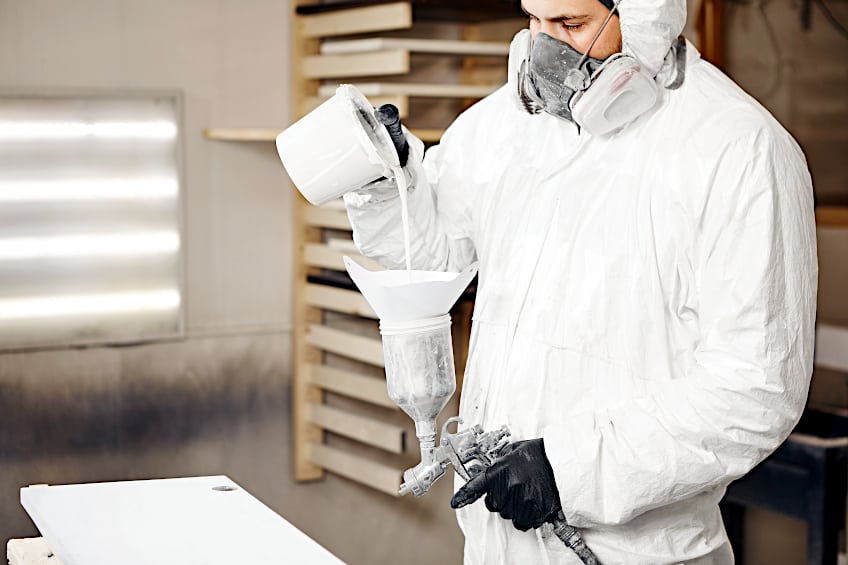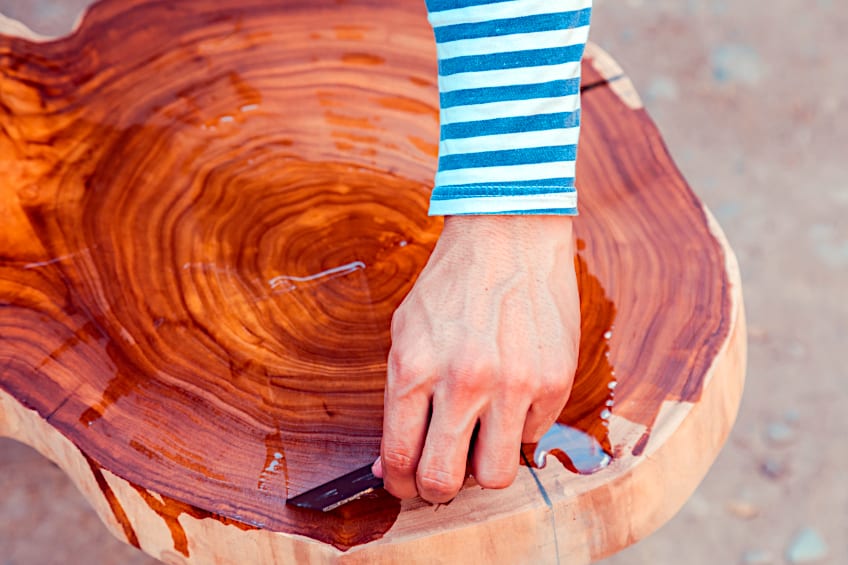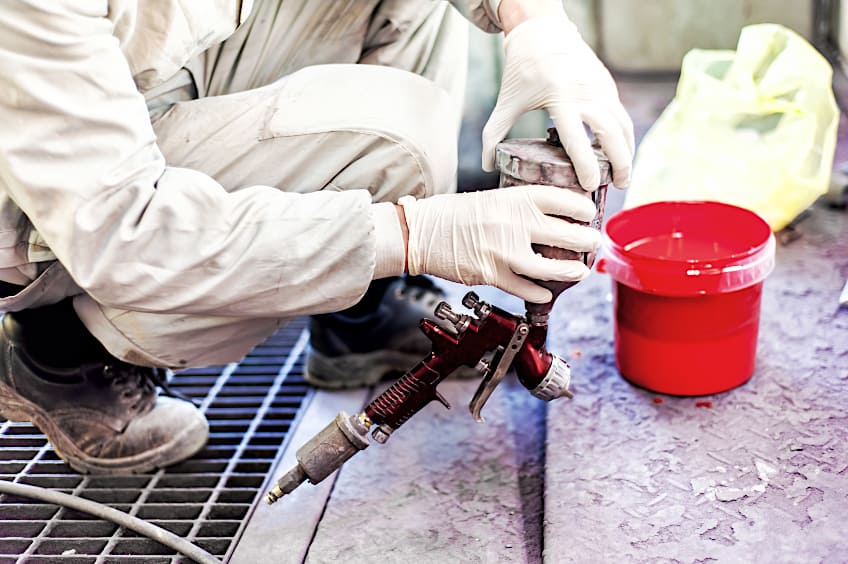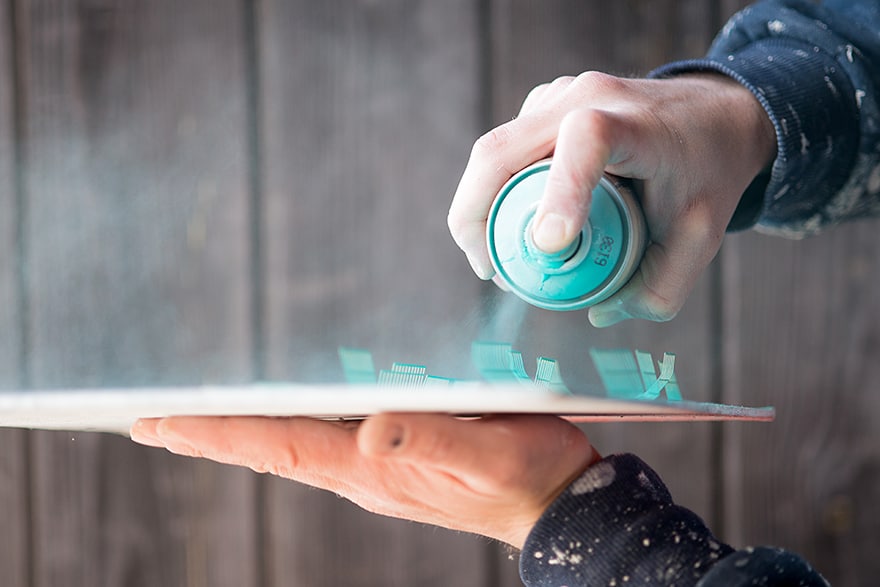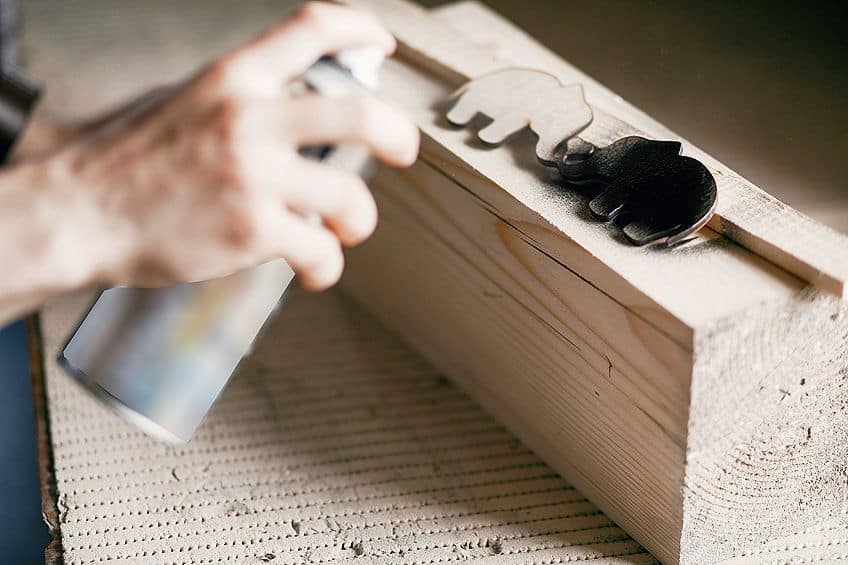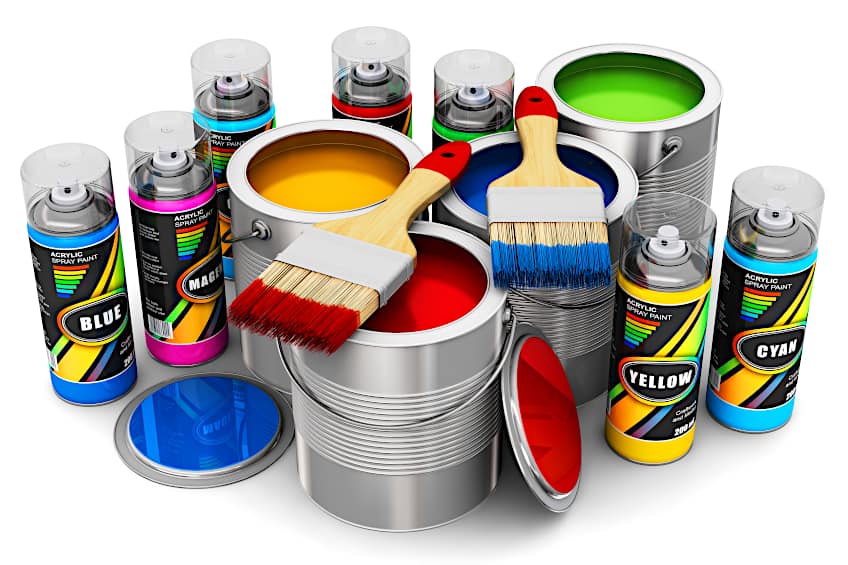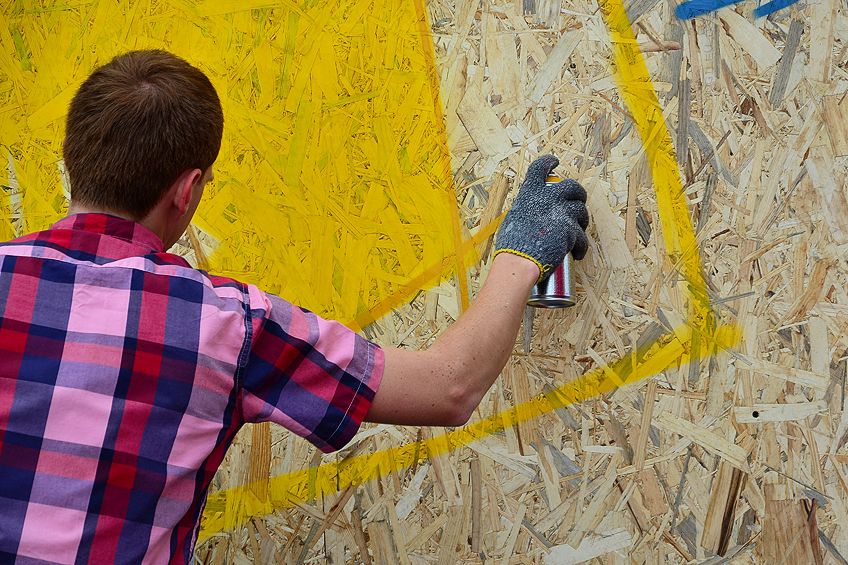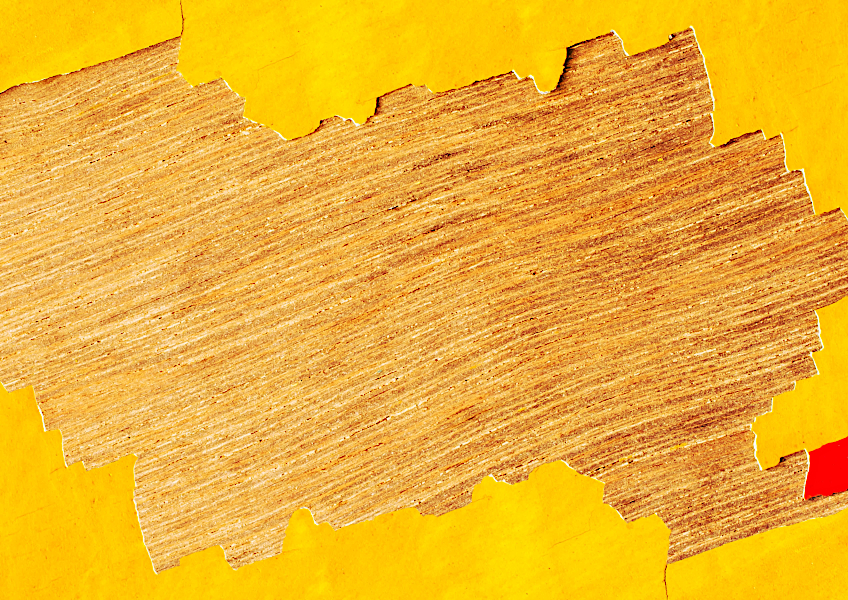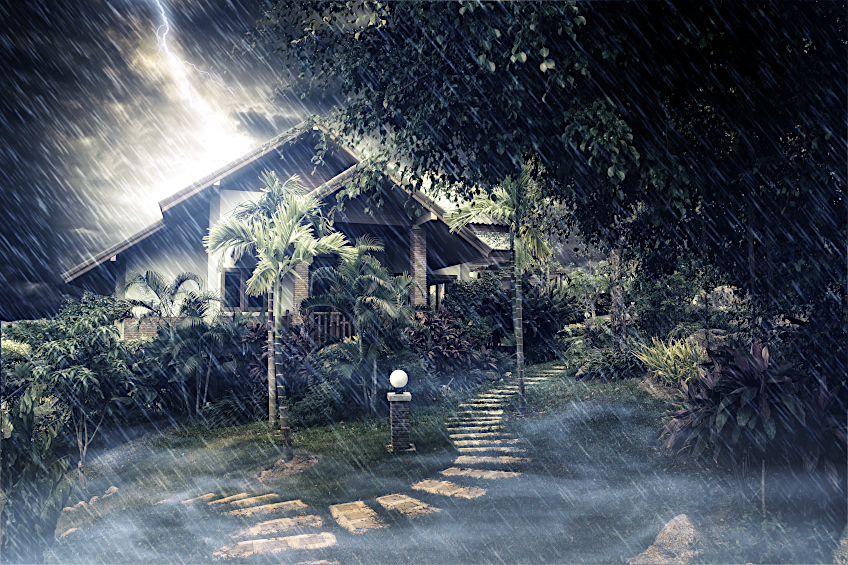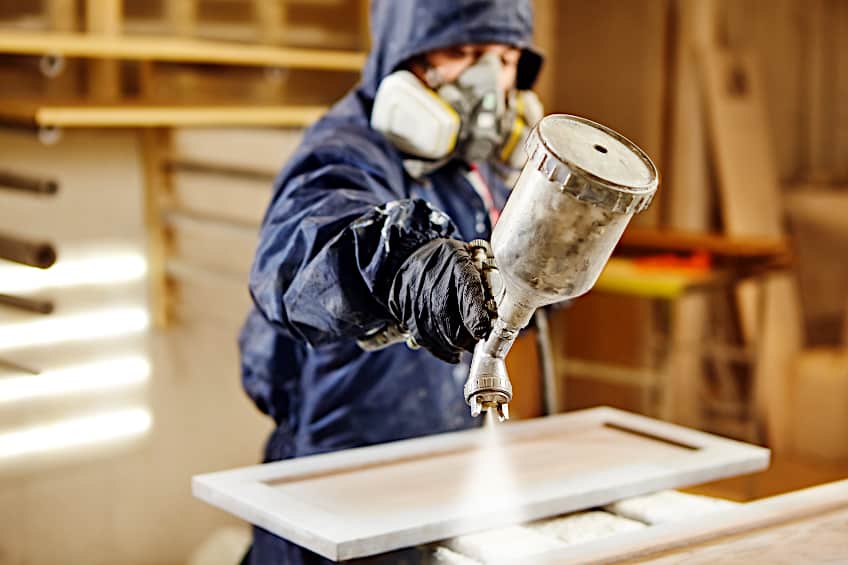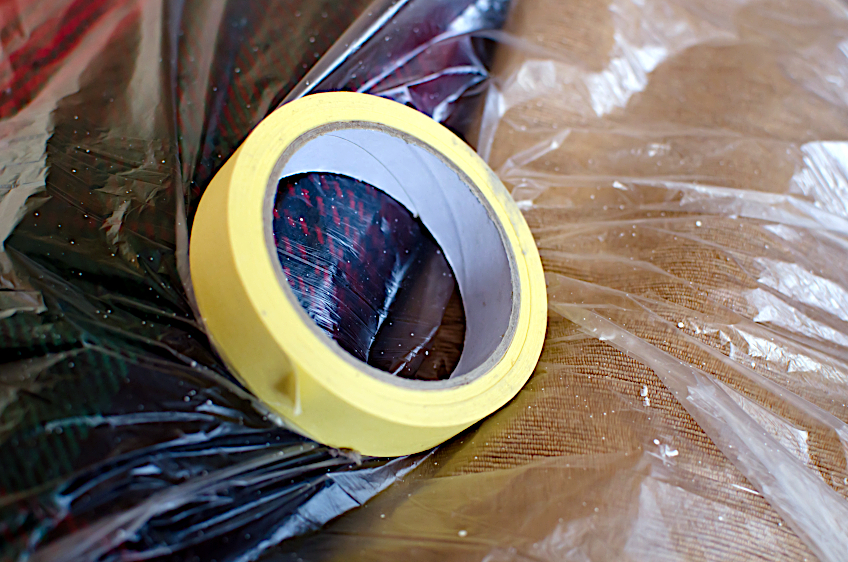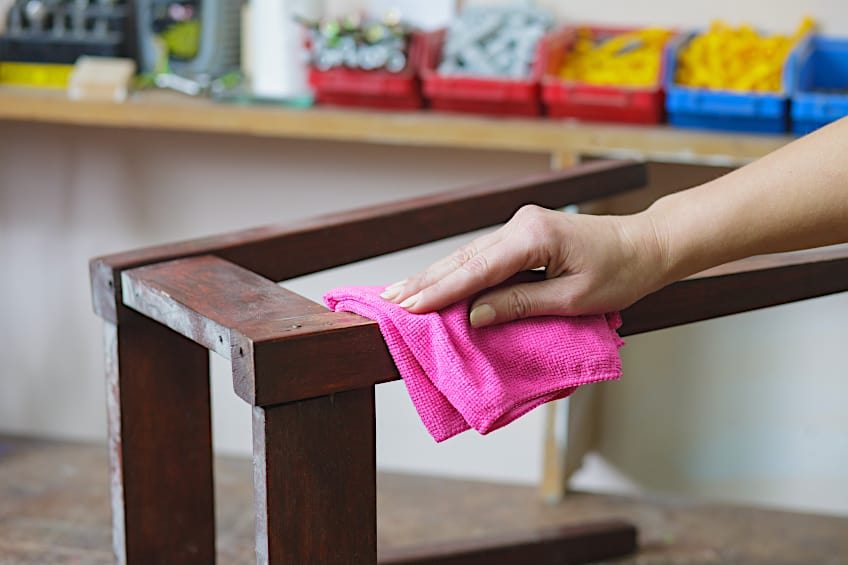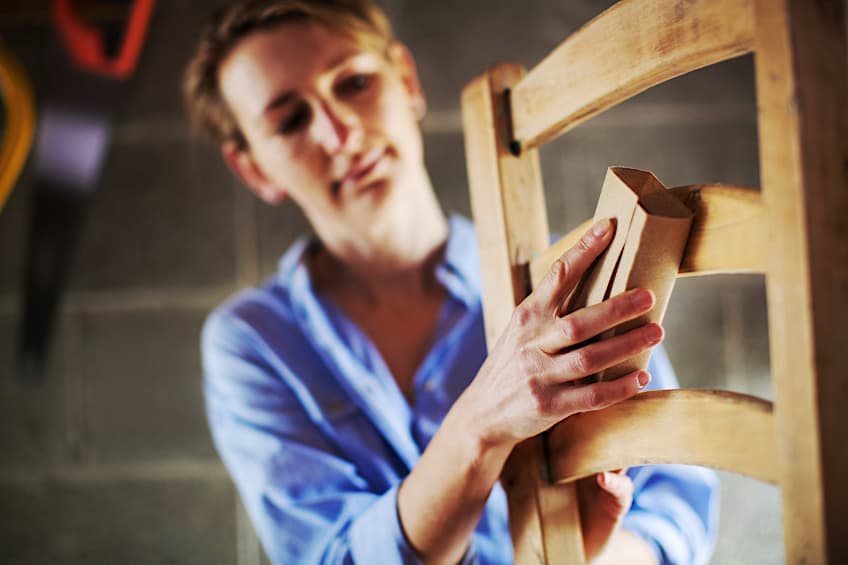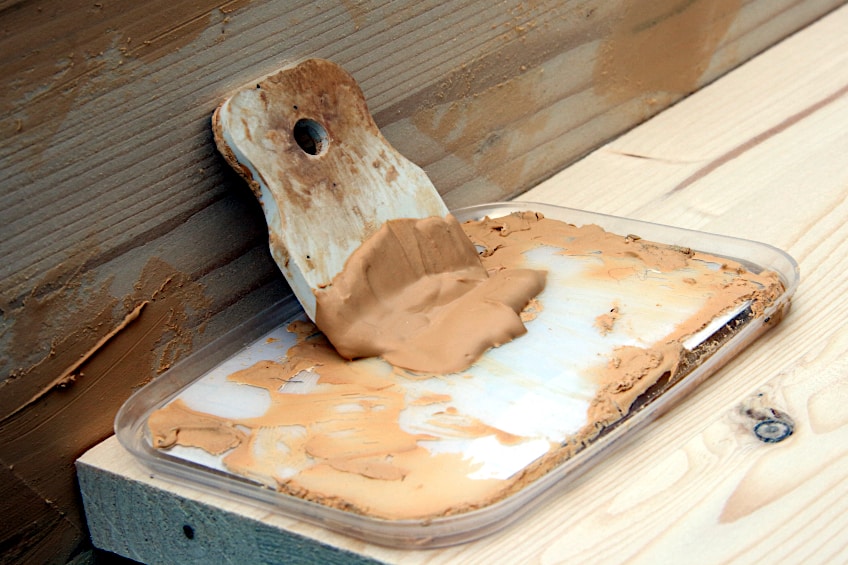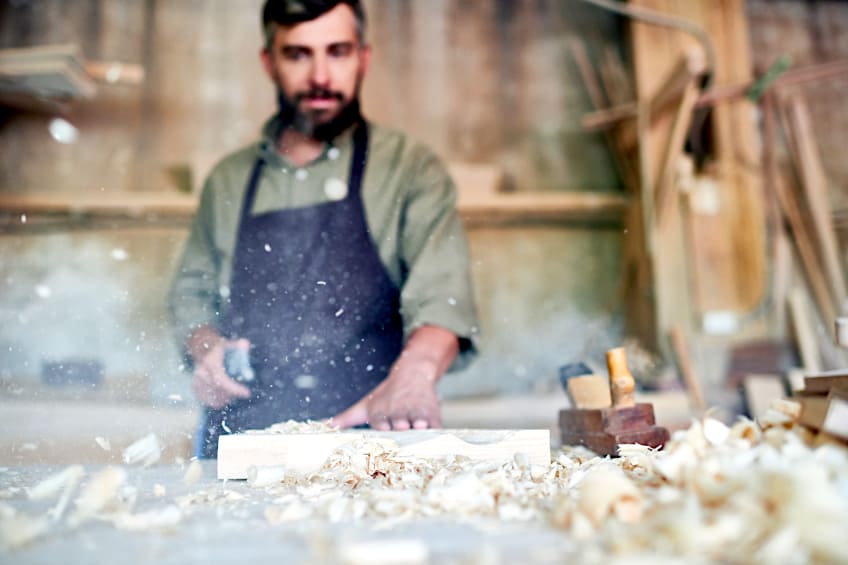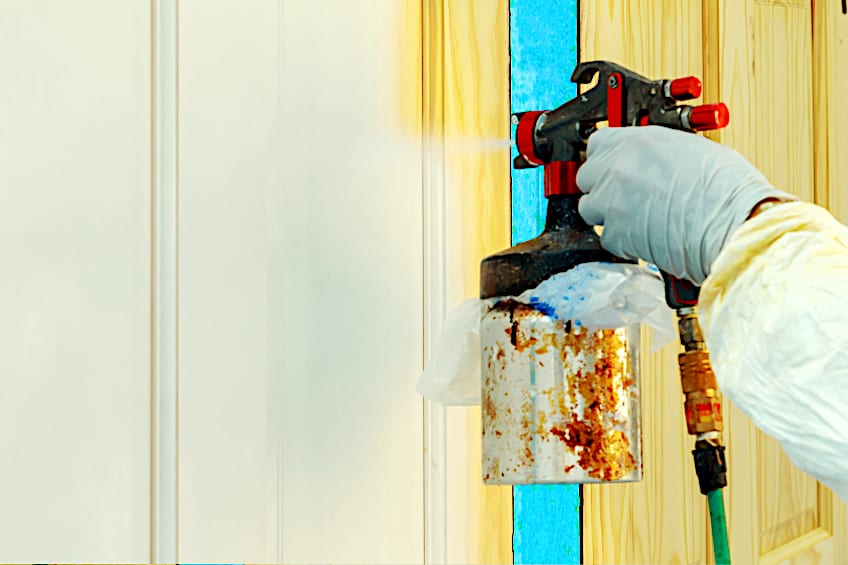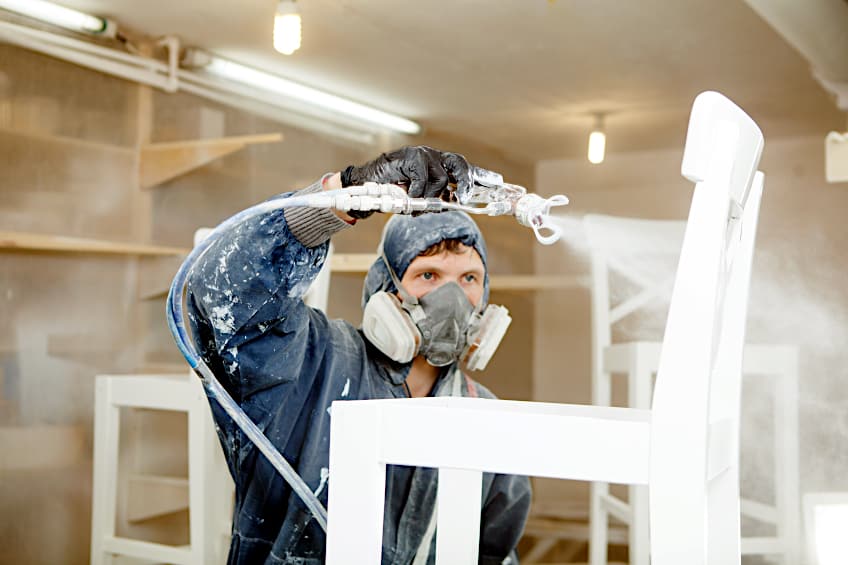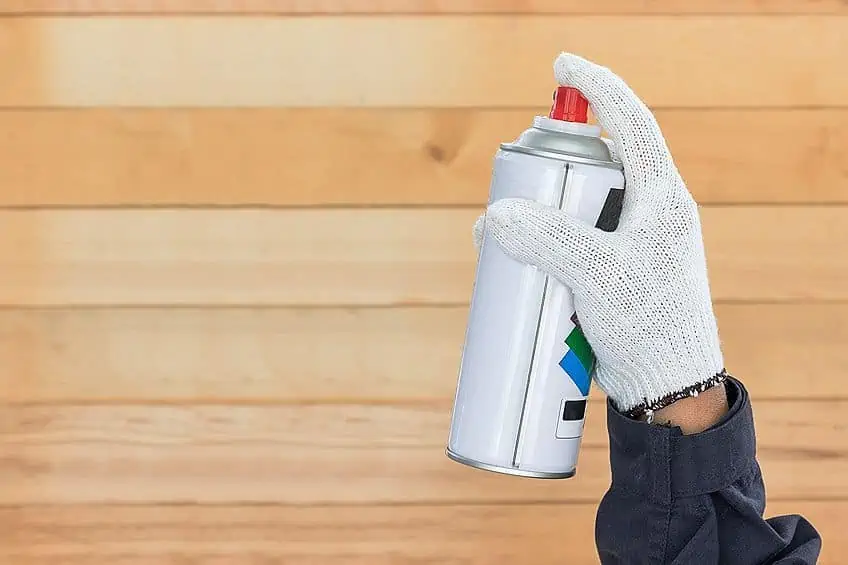How to Spray Paint Wood – Pros and Cons of Spray-Painting Wood
This post may contain affiliate links. We may earn a small commission from purchases made through them, at no additional cost to you. You help to support resin-expert.com
Back in the day, painting by hand was the only choice we had. Are you painting an entire house? Get out that brush and roller. Oh, you’re painting 20 chairs and only have a day to get it all done? Better limber up before you get carpal tunnel in those wrists! These days we don’t have to labor for hours on end with a brush and roller setup that has become worn out after being dragged against various surfaces for hours on end. Why? Well, we have the option of spray painting pretty much anything our hearts desire, saving loads of time, and money, and paint along the way. What is the best way to spray paint wood though? Let’s have a look at how to spray paint wood, why it’s better than using a brush and roller, and how to perfect your spray-painting finish.
Table of Contents
What Type of Spray Paint Works Best on Wood?
Before we get into how to spray paint wood let’s have a look at what type of paint is best suited for spray painting a wooden surface. There are various types of spray paint for wood, all of which offer different textures, and finishes, and can even range considerably in color options. The question is then, which are the best types of spray paint for wood?
Here are some of the best paint types for spray painting a wooden workpiece.
Oil-Based Paint
Oil-based paint has been around for a really long time, mainly because it’s the easiest to synthesize, but also because it interacts well with wooden surfaces. Oil-based paint consists of pigments (which give the paint its color) suspended in a drying oil, which are typically a derivative of tung or linseed oil. These paints are long-lasting and produce a vibrant color when applied to wooden surfaces.
This paint has a great track record with wood, being used as far back as the 7th century. It works so well because it seeps into the wood fibers, bonding with the wood on a molecular level and offering a level of protection and durability that was unmatched for a really long time.
The rich color provided by oil-based paints is a result of their oil base, which provides a sheen finish when applied to wooden surfaces.
Oil-based paint can be applied using the conventional brush and roller method, or it can be applied using a paint sprayer. Due to its viscosity oil paint tends not to gunk up sprayers, instead lubricating the various recesses through which the paint passes, allowing for a smooth application process.
Oil-based paints do contain VOCs (volatile organic compounds) though, so it’s best to use them in well-ventilated environments with the appropriate personal protective gear.
Acrylic-Based Paint
Acrylic paint is largely considered to be the long-awaited replacement for oil-based paints. Acrylic paint is essentially pigments that have been suspended in acrylic polymers and various plasticizers, much the same way oil-based paints have pigments suspended in drying oils. The consistency of acrylic paints is a bit less runny compared to their oil-based counterparts, but this can easily be altered if need be.
Acrylic paint can be used on pretty much any material out there if the right primer has been used and if the surface has been prepared correctly. It works particularly well on wood too, and even though it doesn’t bond with wood fibers the same way oil-based paints do, it does a great job of forming a durable surface coating that is capable of protecting the wood while improving its look.
While oil-based paints provide a sheen finish with a rich color palette, acrylic colors can look slightly muted by comparison.
However, acrylic paints often come in a larger selection of colors and tend to be easier to clean up compared to oil-based ones. Acrylic paints also contain far fewer VOCs and are the paint of choice for most modern wood-crafting projects.
Is It Better to Spray Paint Wood or Paint It by Hand?
Can you spray paint wood better than painting it by hand? Can you paint wood better by hand than by spray painting? Well, this depends on your skill level and level of comfort with each medium, but each has its respective advantages and disadvantages.
This being said, let’s have a look at some of the pros and cons of both spray-painting wood and using the conventional brush and roller method.
Spray Painting Wood
If you’ve never spray painted before, then you might be a bit hesitant to try it out for the first time. There’s no need to be nervous though, as the learning curve involved in spray painting a wooden workpiece isn’t steep at all, plus you’ll save a ton of time and elbow grease compared to using a brush and roller. On the other hand, it takes a lot more equipment to spray paint something compared to using a brush and roller.
Here are some other pros and cons associated with spray painting.
- Great for smaller workpieces
- Highly durable finish
- No visible brush strokes
- Highly efficient coverage and use of paint
- Thinner coats dry much quicker
- Makes it easier to paint tricky areas of a workpiece
- Can be used to easily paint irregularly shaped workpieces
- Minimizes waste and ensures that mess is easier to clean
- Can be used with self-priming paint (no sanding needed!)
- Using aerosolized paints requires proper ventilation and personal protective gear
- You could encounter clogged nozzles and faulty lines
- Full-sized sprayers require a power source, compressed air, or a turbine to operate
- Adequate space is needed for equipment
- Paint sprayers and their attachments can be expensive
- Sprayers can make loads of noise, especially compressor-powered ones
Painting Wood by Hand (Using a Brush and/or Roller)
Painting wood by hand has never gone out of style, even after the advent of the paint sprayer and aerosolized paint cans. This is because there are some applications where a sprayer cannot be used and painting something by allowing for greater attention to detail. Painting something manually is also less expensive, far less noisy, and doesn’t require you to store any additional equipment.
This being said, painting by hand can be labor intensive and might lead to you having to conceal brushstrokes.
- Better suited for larger pieces of furniture
- A larger selection of paint colors on hand (both in-store and online)
- Can cost less when painting large pieces of furniture
- Allows you to use water-based paints more effectively (which contain fewer VOCs)
- Doesn’t require any additional equipment besides a brush, roller, and paint tray
- Allows you to get a better feel for the contours of the workpiece
- Can use less paint in some instances
- No need to clean any valves, hoses, or spray gun
- No risk of blotches or orange peel
- Can be done with less personal protective gear
- Paint takes longer to dry due to thicker coats being applied
- Far less efficient compared to using a sprayer
- Can require multiple coats to achieve the same level of coverage as a sprayer
- Requires more physical effort
- Takes far longer compared to using a paint sprayer
- Easy to miss smaller or inconspicuous areas of your workpiece
- Requires more preparation
- Brushes and rollers need to be cleaned by hand afterward to ensure continued use
Do You Need Primer When Spray Painting Wood Furniture?
This is a tricky question to answer considering that these days there are self-priming paints available, and depending on the type of wood you’ll be spraying you might not even need to sand the surface to achieve good adhesion. This raises the question; do you need to use primer at all considering how advanced modern paints have become?
Well, this depends on the person as well as the type of wood, and the paint being used. An experienced painter tends to be familiar with which materials will have inherently good adhesion qualities and which paints don’t need a primer when used on particular types of wood.
In this case, what is the point of using a primer at all?
Well, considering that no two woods are exactly the same, we think that even if you are a veteran painter, it’s best to be sure and use a primer anyway. Some wood species are dense and don’t have sufficient porosity to allow the paint to be absorbed. This could result in your paint peeling away or lifting, even after the first coat, which means you’ll need to remove the paint and repeat the application process.
You might also want to use a primer if your workpiece is going to be placed outdoors most of the time. Primer provides an additional layer of protection to both your wood and paint, ensuring that the wind, rain, and sunshine affect the layer of paint closest to the wood as little as possible.
This can save you loads of time, money, and effort down the road.
How Much Spray Paint Do You Need for a Wood Project?
If you’re thinking about spray painting wood furniture, you might find yourself asking how much paint you will need. This usually depends on the size of an individual workpiece, and how many of the workpieces you’ll need to paint.
The best way to calculate how much paint you will need for any wooden workpiece is to know the surface area that you’ll need to cover.
Now, this might be an easy task when it comes to conventionally shaped workpieces or flat wooden surfaces, but it can be tougher if your workpiece is intricately shaped. Painting something that’s been hand carved or an installation art piece can be pretty tough if you don’t know much paint you’ll need, especially if you’re on a tight budget.
If you don’t know the surface area, your best bet is to ballpark it and/or play it by ear. If you can calculate the surface area, on the other hand, it’s best to know your paint can sizes and the area they are capable of covering. This being said, if you are going to be using an aerosolized can to spray paint your wooden workpiece, there are a few rules of thumb you can follow.
Using a Spray Paint Can
Spray paint cans typically come in four and a half ounce, six-ounce, 12 ounces, and 16 ounces respectively. A four and a-half once can is capable of covering around seven square feet, a 12-ounce can should cover around 20 square feet, and a 16-ounce can should cover around 30 square feet. This all depends on your trigger discipline and the type of paint you’re using.
Using a Paint Sprayer
What if you aren’t using an aerosolized can, you ask? Well, if you’re spray-painting furniture with a paint sprayer you shouldn’t need more than a gallon. This being said, a pint should cover around 50 square feet, a quart should cover around 100 square feet, and a gallon should cover around 200 square feet.
This should be more than enough for pretty much any wooden furniture painting project.
How to Spray Paint Wood Furniture
Now that you know why it’s a good idea to spray paint wooden workpieces, we thought it would be a good idea to show you how to spray paint wood furniture. This method can be applied when using a paint sprayer as well as a spray paint can, and the preparation remains the same as well.
The only exception is that you need to ensure your air and power supply is ready when using a sprayer, and that it’s been filled with enough paint.
Prepare Your Workspace
Spray painting can get pretty messy, especially if this will be your first attempt. The first step in the preparation process is to ensure that your workspace has been prepared for the task ahead. This means ensuring that your workbench, floor, and any other surfaces have been covered to protect them from stray paint droplets and any aerosolized particles that might settle on them later on.
Next, you should ensure that your workspace is well-ventilated. Aerosolized particles get into everything that isn’t covered, and this includes your lungs and airways. Ensuring that your workspace has constant airflow and that you’re wearing a respirator graded for use with spray paint will prevent any discomfort and/or potential illnesses that could result from inhaling paint particles.
Finally, ensure that your tarp has been secured with some painter tape.
You can use some masking tape too if you don’t have any painter’s tape around, it’s simply to ensure that your tarp, or old newspaper, doesn’t move around while you’re working. Not only can this be annoying, but it could cause you to slip and fall while working.
Prepare Your Workpiece
Preparing your workpiece correctly is super important to achieving a good finish. How do you prepare your workpiece well then? Well, the best way to start is by ensuring that the surface of your workpiece is clean. Cleaning wood is simple, all that you need is some soapy water, a clean cloth, and some elbow grease.
Scrub away any dirt or grime present on the surface of the wood and allow the surface to dry completely before continuing to the next step.
Next, you should sand your workpiece. This is especially important if your workpiece has an existing surface coating like paint, epoxy, or a wood treatment like varnish. Use sandpaper of 180 grit or greater to get a nice smooth finish. Start at one end of your workpiece and work your way toward the other, making sure to follow the direction of the wood’s grain to avoid your sandpaper catching.
Once you’re done sanding, remove any wood particles with a clean cloth or some compressed air.
Once your workpiece has been sanded, it’s time to fill in some gaps. If you’re restoring an old wooden furnishing, it’s best to fill in any cuts or dents it may have acquired over the years. The best way to go about this is to use wood filler putty and an applicator. This can be purchased pretty much anywhere, including online. Start off with a small amount to fill in the spots, flatten it, and add more if need be.
Once applied, allow the filler to dry for the manufacturer’s recommended time period, sand away excess filler, and wipe down with a damp cloth.
Prime Your Workpiece
Before you get to priming, it’s best to ensure that your surface is as flush as possible. Using some sandpaper, sand down any wood filler that may be making the surface of your workpiece uneven, and remove any excess particles with a clean cloth or compressed air as you did during the initial sanding process.
Once you feel that your workpiece is clean, it’s time to apply your primer. While some paints are self-priming, we think it’s best to be sure your paint will adhere correctly the first time. This being said, prepare your primer by giving it a good shake and a test spray on a spare piece of wood.
Once you’re sure it’s good to go, start by spraying off your workpiece with medium pressure.
Move your wrist in one smooth, uninterrupted motion across the surface of your workpiece, increasing the pressure ever so slightly during this process. Repeat this process, following the length of the workpiece section by section until the entire surface you’ll be painting has been primed.
Finally, allow your primer to set for the manufacturer’s recommended time period before moving on to the next step in the process.
Paint Your Workpiece
Now for the part you’ve been waiting for! Painting your workpiece is the easy part, especially if you have followed the preparation steps correctly. If you’re using a sprayer, ensure that you’ve mixed your paint well before filling your hopper or auxiliary container. If you’re using a spray paint can, ensure that you give the can a good shake and listen to the ball roll around for a bit.
Next, ensure that the nozzle of your applicator is around 12 inches away from the surface of your workpiece to avoid over-application. Once you’re in position, just as you did with the primer, start with light pressure, spraying off the workpiece, and then move your wrist in one smooth, uninterrupted motion across the surface of your workpiece until you reach the other end.
Try to increase the pressure ever so slightly as you go along.
It’s best to spray large workpieces in sections. This will allow you to overlap your coats and ensure that there aren’t any gaps. Repeat the aforementioned process section by section until your workpiece has been painted as intended. If you’d like to add additional coats, remember to let each coat dry for the manufacturer’s recommended time period before applying the next, and maybe give the surface a light sanding beforehand.
Now that you know why spray painting your workpiece is a good idea, what the best paint type for spray painting wooden workpieces are, some of the pros and cons of spray paint, and how to spray paint a wooden workpiece effectively, it’s time for you to get out there and put your newfound knowledge to the test. Remember to always wear the appropriate personal protective gear and to ensure that your workspace is well-ventilated.
Frequently Asked Questions
Can You Spray Paint Wood?
Can you spray paint wood? Yes! In order to spray paint wood effectively, your workpiece needs to be well prepared. Ensure that your workpiece is clean, that the surface has been filled, sanded, primed, and that you’re using a good-quality paint.
Is Spray Paint Harmful?
Like most things, if used incorrectly, spray paint can be harmful. Inhaling aerosolized particles, or if paint droplets come into direct contact with your hands, eyes, or skin, can cause severe discomfort. This is why you should always wear a respirator, eye goggles, and protective clothing when working with spray paint.
Is Spray Paint the Same as Paint?
Is spray paint the same as paint? Functionally, the two are the same. Spray paint is typically oil-based though, whereas conventional paint is available in many forms, including latex, acrylic, oil, and even chalk-based variants.


